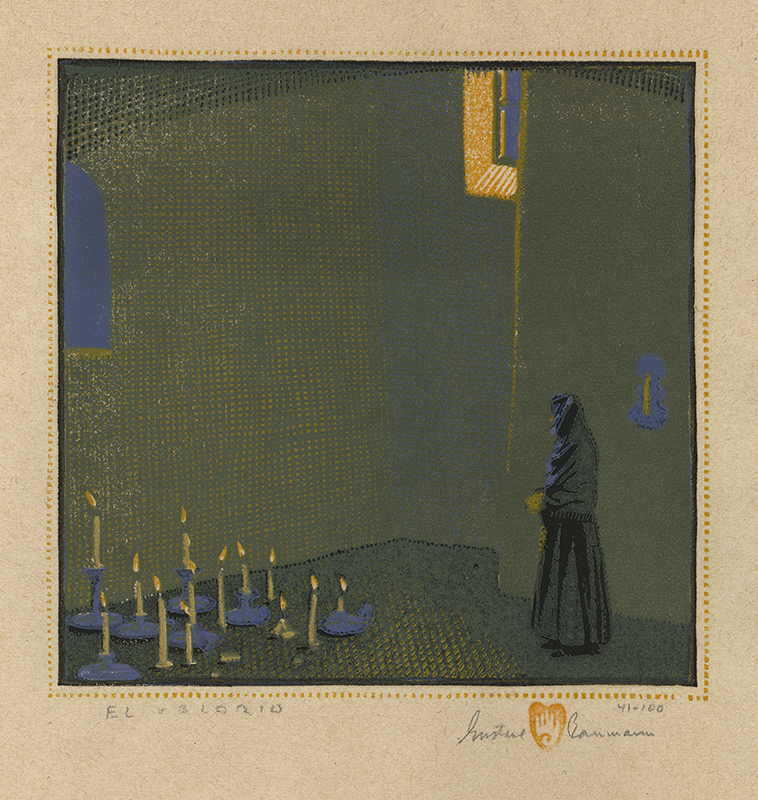El Velorio is a color woodcut from 1927 by American master printmaker Gustave Baumann (1881-1971). This impression is pencil signed, titled, and editioned 41-100. It is believed that the block letter title and the edition were inscribed by Baumann at a later date and he forgot that his edition was 120 rather than 100. El Velorio was printed by the artist on a cream Zanders laid paper with the Bergisch Gladbach watermark and the image measures 8-1/8 x 8-1/4 inches. The reference for this work is Chamberlain 118. For an explanation of the printing record for this color woodcut, the number of blocks used, and the editions, we refer you to pages 337-339 of In A Modern Rendering The Color Woodcuts of Gustave Baumann: A Catalogue Raisonné.
This impression of El Velorio is opaquely printed in rich, vibrant colors. At the time of this printing campaign, Baumann was using oil as the vehicle to mix his ground pigments and, as a result, the colors are saturated and brilliant. In 1927, Baumann projected his editions at 120 rather than 100 and this switch caused a few editioning nightmares for the artist. El Velorio is representative of Baumann’s profound respect for the cultures and religions of the Southwest. In his manuscripts, Baumann wrote: When about a century ago we found ourselves in material and cultural possession of the Southwest it proved to be a paradise for both Archeologist and Ethnologist. People not only had lived here long ago but other people were still living here minding their own business as well as they might with the cultural mores of Spain and Mexico as their heritage. As a latecomer, a white man and an Artist interested in life I too had an insatiable curiosity about the Southwest and its people—how they lived, loved and worshiped.
Gustave Baumann was born in Magdeburg, Germany on 27 June 1881. Ten years later his family immigrated to the US, settling in Chicago. In 1896, Baumann began working in the commercial art field while saving money to study in Germany. After returning from Munich in December 1905 where he studied at the Kunstgewerbeschule, Baumann worked again in commercial art to support his family. In 1909, he discovered Brown County, Indiana where life was inexpensive and he could stay for three months. He produced a series of small format color woodcuts featuring the people and places of Brown County and then produced five large format color woodcuts. His woodcuts were accepted by the committee for the 1915 Panama Pacific International Exposition and he won a gold medal in 1916. Baumann headed east to Wyoming, New York in 1917 and taught at a summer school. From there he headed to Provincetown and New York City before returning to set up his studio in Wyoming. The southwest beckoned and he headed west in May 1918, stopping in Taos for the summer and fall. His funds were low and he needed to head back to Chicago but first stopped at the new art museum in Santa Fe to see an exhibition of his woodcuts. The rest, they say, is history.



